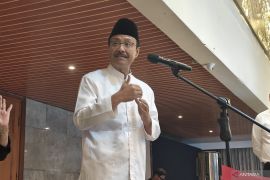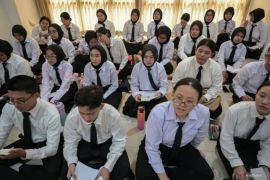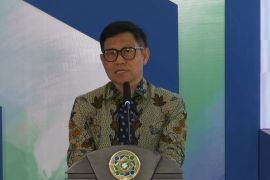Deputy Head of Training, Research, and Development at BKKBN, Rizal M. Damanik, noted in a written statement received here on Friday that the COVID-19 pandemic had impacted productivity in almost all ASEAN countries.
Both the Indonesian and the Philippine workforce had lost their jobs, either temporary or permanently. Lockdown in some countries led to decreased salaries, he noted.
Damanik remarked that Indonesia would experience a demographic bonus during the period from 2030 to 2040 wherein people in the productive age group of 15 to 65 years would constitute 64 percent of the total projected population of 297 million. The figure is larger than the prospective rate of people not of the productive age, which were below 15 and above 64.
According to the National Population Census, there were 270.20 million people in 2020, an increase from the figure capped at 237.63 million in 2010.
The higher population rate would be able to assist the government in creating favourable political and economic ecosystems, through the development of human resources.
In February 2020, the National Workforce Survey stated that there were 51 million millennials in the workforce. Additionally, there were 45 million members of Generation X in the workforce.
However, according to the National Workforce Survey conducted in August 2020, both generations saw a decline in figure within the workforce. By then, there were 48 million millennials and 45 million members of Generation X, which meant that COVID-19 had been affecting them, he noted.
COVID-19 then struck everyone, thereby causing medical expenditures for public health to skyrocket. It changed the amount of workforce because of deaths and morbidity and in turn brought down household income.
It was despite President Joko Widodo having given directives to steer Indonesia out of the middle-income trap by 2045, by gaining Rp27 million per month or Rp320 million a year for income per capita. It also included the target to increase the gross domestic product capped at US$7 trillion.
Senior Researcher of the Demographic Institute at the University of Indonesia Omas Bulan Samosir confirmed to an increase in the rate of population in poverty due to COVID-19.
When COVID-19 struck, there were 26.42 million poor people in Indonesia. The figure increased to 27.55 million people in September 2020, Samosir pointed out.
"Compared to 2019, there were 21.14 million poor people in March, and later, the figure increased to 24.78 million in September 2019. There is a bit of decline (in the figure) in 2021, in which there were 27.54 million (poor people) in March, then (down to) 26.50 million in September 2020," she remarked.
Related news: Govt to boost productive age group's competence for demographic bonus
Related news: Middle class constitutes 84 percent of global population by 2045
Related news: Indonesia needs 3 mln jobs annually to prepare for demographic bonus
Translator: Hreeloita D S, Mecca Yumna
Editor: Sri Haryati
Copyright © ANTARA 2022












